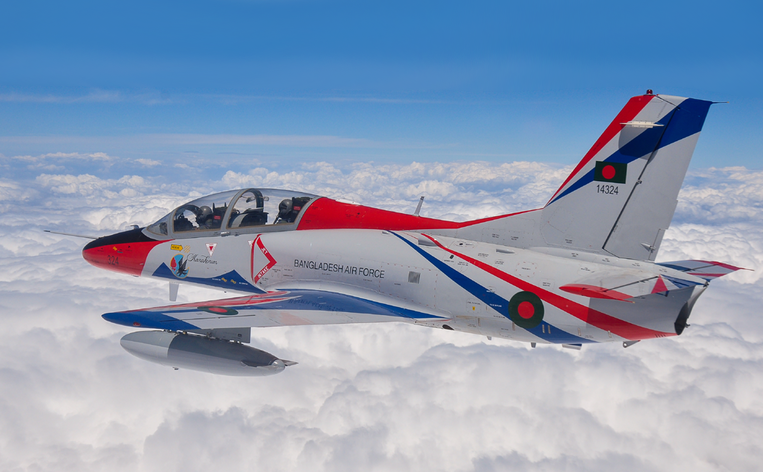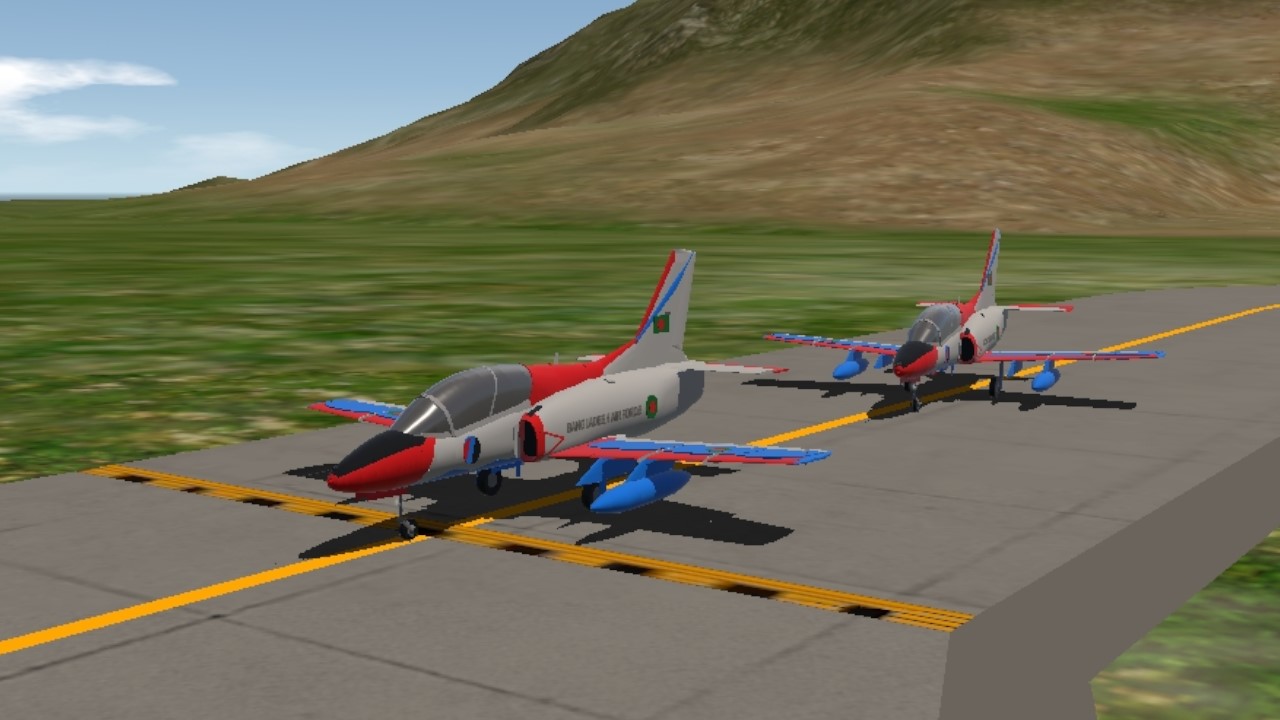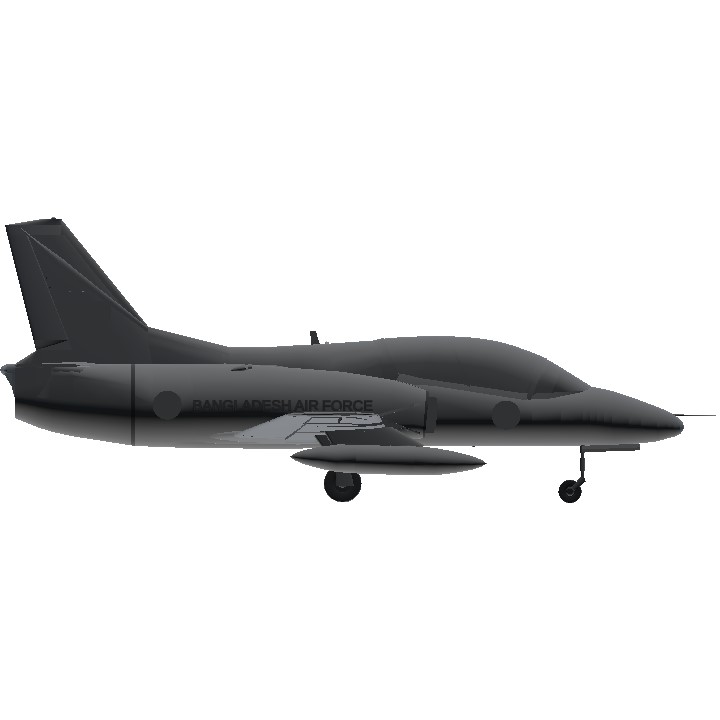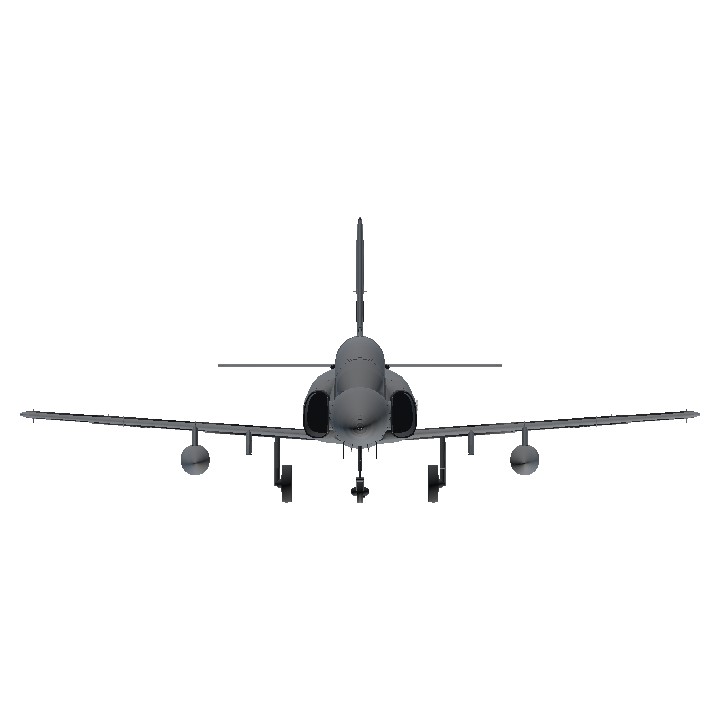WIKI
The Hongdu JL-8 (Nanchang JL-8), also known as the Karakorum-8 or K-8 for short, is a two-seat intermediate jet trainer and a light attack aircraft designed in the People's Republic of China by China Nanchang Aircraft Manufacturing Corporation. The primary contractor is the Hongdu Aviation Industry Corporation.
The JL-8 trainer was proposed as a joint cooperation effort between the governments of Pakistan and the People's Republic of China in 1986. The name was changed on the suggestion of Pakistan's then President Zia ul Haq to Karakoram-8 to represent the friendship between the two countries. Work on the design started in 1987 at Nanchang Aircraft Manufacturing Company (NAMC) at Nanchang, Jiangshi Province in South Central China. The Chinese chief designer of the aircraft was Shi Ping (??), heading a team of over 100 Chinese Engineers, while Air Cdr Muhammad Younas Tbt (M), SI(M) was the chief designer from the Pakistani side leading a team of over 20 Pakistani engineers.
Initially, the aircraft was to feature many parts manufactured in the United States, including Garrett TFE-731 engine and several cockpit displays along with communication and avionics systems, but due to political developments and an embargo from the US at the end of the 1980s following the Tiananmen Square protests of 1989, other suppliers had to be used. The first prototype was built in 1989, with the first flight taking place on 21 November 1990 by Chief Test Pilot Col Yang Yao (??). Flight testing continued from 1991 to 1993 by a Flight Test Team consisting of four Chinese and two Pakistani pilots.
After four prototypes were built, production of a small batch of 24 aircraft was launched in 1992. The Chinese share out of these was 18, while the Pakistan Air Force (PAF) received six K-8s in 1994. In 1995, the PAF decided to order 75 more K-8s to gradually replace its fleet of Cessna T-37 Tweet basic trainers. In 2010, the number of K-8 aircraft in the PAF inventory was estimated to be around 40. The People's Liberation Army Air Force (PLAAF) received its first six JL-8 trainers in 1995 following additional upgrades. The Chinese model uses a Chinese-manufactured version of the Ukrainian Ivchenko AI-25 (DV-2) engine, designated WS-11. The PLAAF is anticipated to continue adding the JL-8 trainer to its fleet to replace its obsolete trainers, such as the Chengdu JJ-5. In 2008, the number of JL-8s in PLAAF inventory was estimated to be over 120 aircraft.
Other countries have shown interest in the trainer and it now also serves in the air forces of Egypt, Sri Lanka and Zimbabwe. While the type primarily serves as a basic and advanced trainer, it can also be used in the close air support or even air combat role when appropriately armed.
The export-variant K-8 Karakorum Basic Common Advanced Jet Trainer is co-produced by China National Aero-Technology Import & Export Corporation (CATIC) for export markets other than Pakistan, while later aircraft for Pakistan have been built by the Aircraft Manufacturing Factory (AMF), Pakistan Aeronautical Complex. The latest export variant is the K-8P version, which currently is operated by the PAF. The K-8P has an advanced avionics package of integrated head-up display (HUD), multi-function displays (MFDs) and comes equipped with MFD-integrated GPS and ILS/TACAN systems. It also features hardpoints for carrying a variety of training and operational bombs up to 250 kg, pod mounted 23 mm cannon as well as PL-5 / 7 /AIM-9 P launchers. In September 2011, NAMC rolled out another 12 K-8P for an undisclosed foreign client.[2]
In 2008 Venezuela announced the purchase of 18 K-8 aircraft. The K-8 has been marketed by China to the air forces of the Philippines[citation needed], and to Indonesia, as a replacement for Indonesia's BAE Hawk jet trainers.[3] In 2009, the Bolivian government approved a deal to purchase 6 K-8P aircraft for use in anti-drug operations.[4] In 2010 the total number of K-8 aircraft produced in all variants was estimated to be more than 500, with a continual production rate of approximately 24 aircraft per year.
14 countries currently operate 8 different variants of this aircrafts.
We have made the "K-8W" variant which is currently operated by the BAF ( BANGLADESH AIR FORCE )
reference images


Controls
AG3 DROP TANKS
VTOL VTOL
NO TRIM sorry
Instructions
Try not to exceed 29% throttle during takeoff....( you are gonna roll off the runaway ). You can max up throttle after gears are up.
Try not to land hard.... it will kill you
Specifications
Spotlights
- TarikArkswagen 3.8 years ago
General Characteristics
- Predecessor Hongdu JL-8 / K-8W Karakoram
- Successors 5 airplane(s) +101 bonus
- Created On Android
- Wingspan 38.3ft (11.7m)
- Length 40.5ft (12.4m)
- Height 16.1ft (4.9m)
- Empty Weight 6,844lbs (3,104kg)
- Loaded Weight 13,152lbs (5,965kg)
Performance
- Power/Weight Ratio 0.683
- Wing Loading 24.1lbs/ft2 (117.5kg/m2)
- Wing Area 546.3ft2 (50.8m2)
- Drag Points 4979
Parts
- Number of Parts 340
- Control Surfaces 0
- Performance Cost 1,215





nice